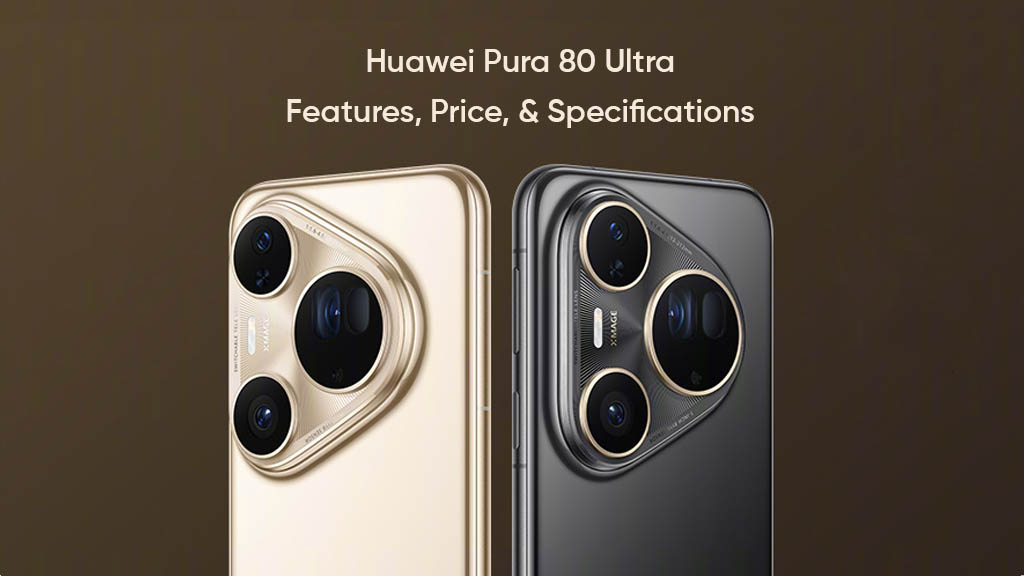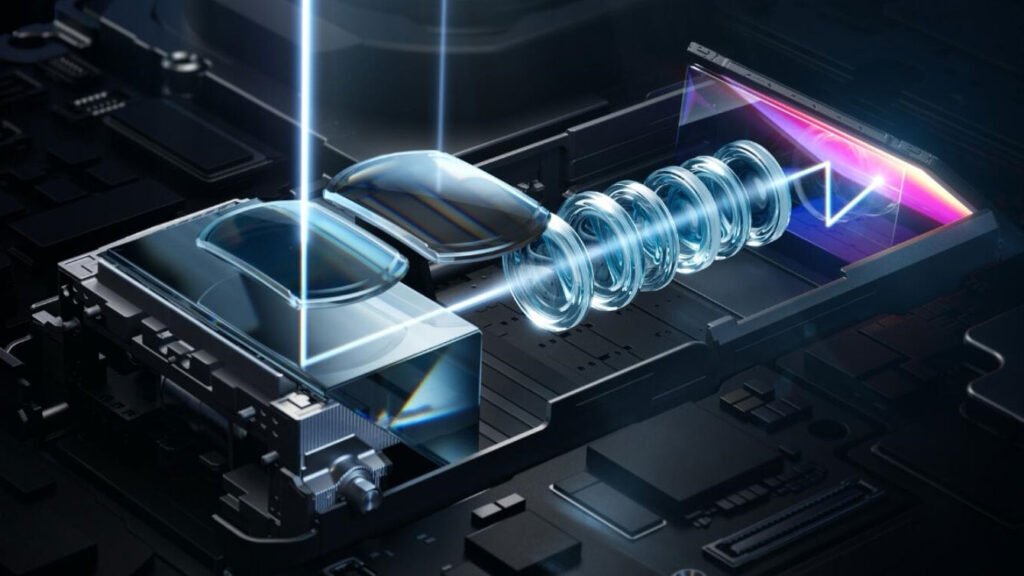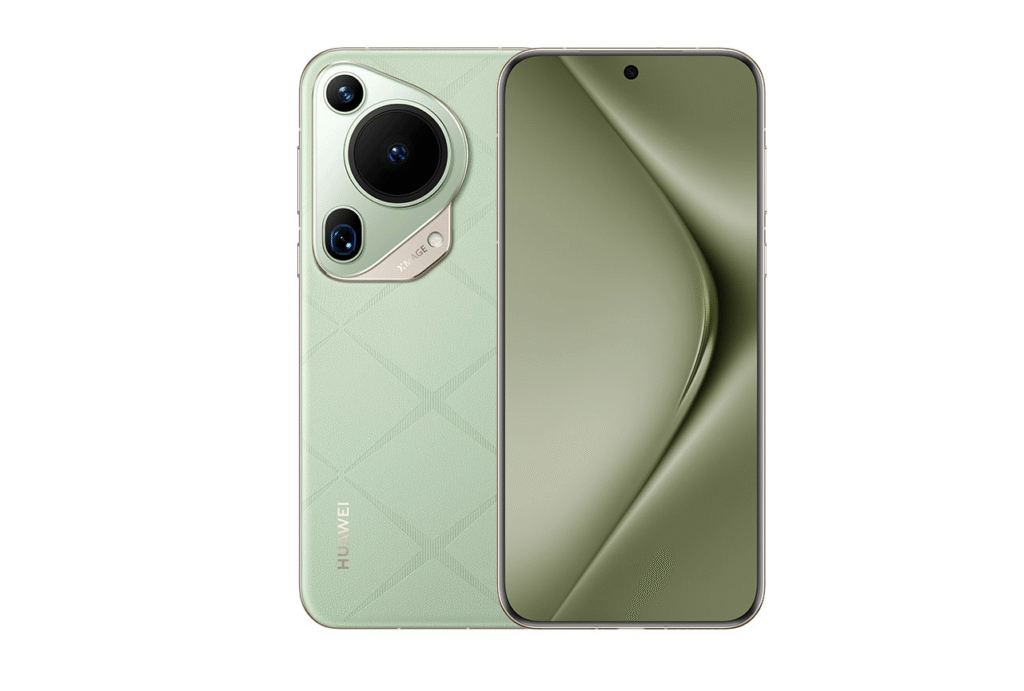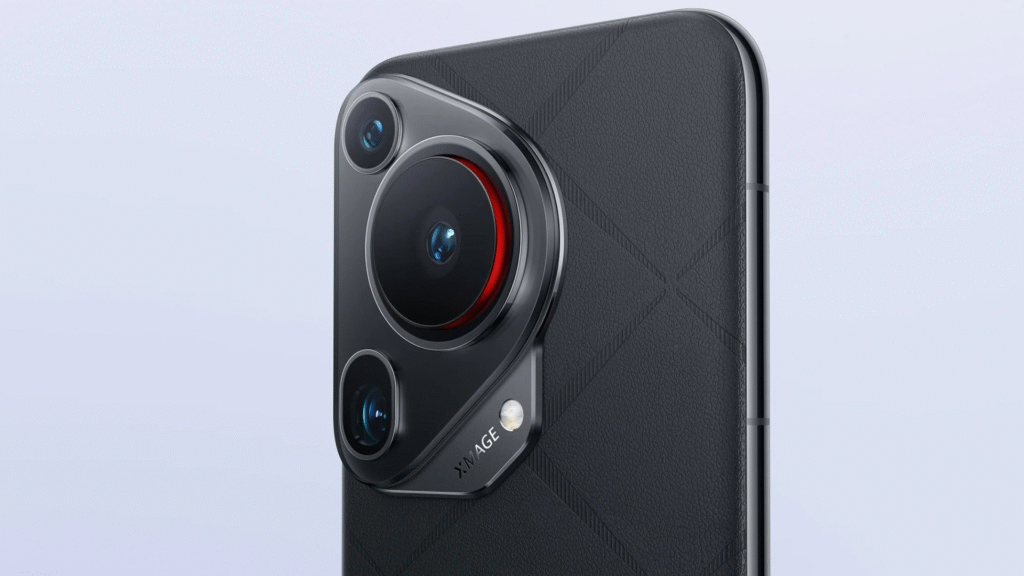Huawei Pura 80 Ultra Launched As a Solid Alternative to DSLR Cameras
Below is an in-depth 3,000‑word exploration of the Huawei Pura 80 Ultra, a smartphone that’s being heavily positioned as a powerful alternative to DSLR cameras, especially for photography enthusiasts and content creators.

1.1 Breaking Sensor Barriers
- 1‑inch main sensor: With Huawei’s custom SmartSens 1‑inch LOFIC CMOS sensor (RYYB color filter), the phone pushes beyond most smartphone norms
- Dual-telephoto lens on one sensor: Boasting both 3.7× (83 mm) and 9.4× (212 mm) optical zoom using a movable prism to redirect light—innovative miniaturization
- Periscope tech: A 1/1.3″ periscope sensor like no other, escaping the usual space-crunch issue
These specs—unusual for phones—edge into the territory of mirrorless systems, with comparable focal ranges and sensor dimensions.

2. Camera System Breakdown
2.1 Main Camera
- 50 MP 1″ sensor with variable aperture (f/1.6–4.0), matching the tech in its predecessor .
- Features sensor-shift OIS and retractable ‘pop-out’ design; VG-Engine lends quick-shot capability to freeze fast subjects—courtesy of Huawei’s XD Motion.
2.2 Ultra-wide Camera
- 40–50 MP sensor capturing expansive shots at ~13–23 mm equivalent.
2.3 The Dual Telephoto
- Combines 3.7× (83 mm, f/2.4) and 9.4× (212 mm, f/3.6) zoom on one sensor.
- Short lens covers full 50 MP, while longer zoom outputs lower-res due to cropping/binning at 12.5 MP.
- Leveraging a large 1/1.28″ sensor yields DSLR-style background compression at long telephoto.
2.4 Macro & Hybrid Uses
- The telephoto doubles as a 35× super macro, focusing to just 5 cm, covering both portrait and extreme close-ups
2.5 Video & Software
HDR modes, stacked exposures, real-time AI assistance via XMAGE + HarmonyOS 5.1
4K video across cameras with gyro‑EIS + OIS; impressive stabilization emulates DSLRs.
3. Image Quality: DSLR Comparisons
3.1 Light Capture & Quality
- Large sensor + variable aperture = tight depth control, significant light capture, and excellent low-light shots.
- Amplified noise control and color accuracy lead to DSLR-comparable outputs, with nuanced detail and depth.
3.2 Zoom Range
- The dual-telephoto system offers true optical zoom up to 9.4×, surpassing many smartphones and encroaching on entry-level DSLR/mirrorless capabilities featuring interchangeable tele lenses .
3.3 Macro & Close-Ups
- A 35× macro margin delivers crisp, dust-mite detail often needing specialist macro lenses in DSLR setups, rivaling dedicated macro lenses in quality .
3.4 Performance Under Motion
Ultra Snapshot mode captures dual exposures of fast-moving subjects—effectively zeroing out motion blur .
4. Beyond Camera: Full Phone Specs
4.1 Display & Build
- 6.8″ LTPO OLED w/ 120 Hz refresh, 2,500–3,000 nit brightness, Kunlun Glass 2/3 for extreme durability.
- Measures ~162.6×75×8.4 mm, weights 220‑233 g, IP68/IP69 rated.
4.2 Performance & Battery
- Powered by Kirin 9020, 16 GB RAM, up to 1 TB storage; HarmonyOS 5.1 (Next).
- 5,050–5,700 mAh battery, 100 W wired, 80 W wireless, and reverse charging.
4.3 Connectivity
Bluetooth 5.2/5.4, Wi‑Fi 6, NFC, full satellite support (Beidou), side-mounted fingerprint
5. Real‑World Value: DSLR‑Level, Pocket‑Sized
5.1 Pocketable Portability
Unlike traditional mirrorless and DSLRs, the Pura 80 Ultra fits in a pocket, eliminating the need for a bag full of lenses. The retractable lens stays protected while remaining thin.
5.2 No Lens Swapping
From ultra-wide to macro to telephoto, the phone covers the full range—no lens changes, no blurred sensor dust.
5.3 AI & Software Advantages
AI-based post-processing, HDR, real-time switching, and in-photo recognition (via XMAGE) offer added conveniences that DSLRs lack.
5.4 Downsides to Consider
Speed: burst rates and shutter lag may trail high-end mirrorless.
Fixed focal lengths vs. custom DSLR glass.
Sensor size and ISO performance still behind APS-C/FF sensors in total dynamic range.
Battery life under extended 4K/AI processing vs. DSLR swappable batteries.

6. Comparison vs. Mirrorless & DSLR Systems
| Feature | Huawei Pura 80 Ultra | Entry Mirrorless | Entry DSLR |
|---|---|---|---|
| Sensor Size | 1‑inch / 1.3‑inch | Micro Four Thirds or APS‑C | APS‑C |
| Lens Flexibility | Fixed lens trio | Interchangeable | Interchangeable |
| Zoom Range | 9.4× optical + digital | 2–3× kit lenses | Variable, based on lens |
| Depth of Field | Shallow via 1″ & apertures | Greater with larger sensors | Similar |
| Macro Performance | 35× super macro from tele lens | Possible with macro lens | Possible with macro lens |
| Size & Portability | Single device, pocketable | Larger with gear | Bulky with gear |
| Price (China) | CNY 9,999 (~US $1,390) | $1,000–1,500 cameras + lens | $1,000–1,500 + lens |
| AI & Software | Built-in XMAGE & HarmonyOS | Third-party apps | Limited, manual control |
7. Market Context & Significance
7.1 Huawei’s Comeback
Huawei launched Pura 80 to regain dominance post‑sanctions, targeting users wanting high-end imaging via livestream to bold selfies.
7.2 Against Prestige Phones
Aimed squarely at Samsung’s Galaxy S25 Ultra and Xiaomi 15 Ultra, Huawei’s camera-first strategy stands as a differentiator.
7.3 Tech & Supply Chain
Huawei sources sensors from SmartSens and OFILM, strengthening China’s tech autonomy.
7.4 Consumer Takeaway
Social media buzz in China; users lauded camera spec, design, yet noted high price tag

8. Long Read: Camera Systems Compared
8.1 The Dual-Lens Telephoto
Unique implementation of two zoom positions on one sensor matches high-end optical performance in compact form—space saving, cost effective.
8.2 1‑Inch Sensor Advantage
1‑inch sensors equal to those in premium compacts; let in massive light, enabling clean low-light performance with bokeh-rich shots .
8.3 AI-driven Convenience
Automations, real-time stabilization, AI recognition, and live-edge editing make photography smarter—not necessarily better, but much easier for amateurs and pros alike.
9. Target User Profiles
Tech Enthusiasts: Cutting-edge lens sensor bridges gap to pro gear.
Travel & Street Photographers: Wide, macro, normal, tele in one device.
Content Creators & Vloggers: 4K stability, AI-focus, quick transitions.
Hobbyists: DSLR-like features without technical overhead.
10. Final Verdict: Is It a DSLR Killer?
- Yes for everyday photography: It provides DSLR-grade output in a pocket.
- No for professionals: DSLR/Mirrorless systems offer lens swaps, full manual control, larger sensors, and backwards compatibility.
- Yes on convenience: No gear bags, no lens cleaning, AI enhancements bridge skill gaps.
- No on customization: Can’t swap lenses or change FX/ISO dynamically beyond preset modes.
Bottom line: The Pura 80 Ultra isn’t replacing full-frame DSLRs in pro studios, but for everyday users, travelers, and creators who want DSG‑like performance without the bulk, it’s one of the most powerful, pocket-sized alternatives yet.
11. Conclusion
Huawei’s Pura 80 Ultra boldly embodies a pocketable hybrid of computational photography and camera hardware. Its features—especially the 1-inch sensor, dual-periscope telephoto, and advanced AI—offer a DSLR-style experience on a smartphone. While limitations exist, its convenience and imaging power make it a top contender for DSLRs on the go.
This phone may not dethrone full-frame systems in pro settings, but it’s reshaping expectations for what a smartphone camera can do—and is setting a new standard for pocketable DSLR alternatives.
For those who prioritize photographic freedom with minimal fuss, the Huawei Pura 80 Ultra is a compelling all-in-one choice.